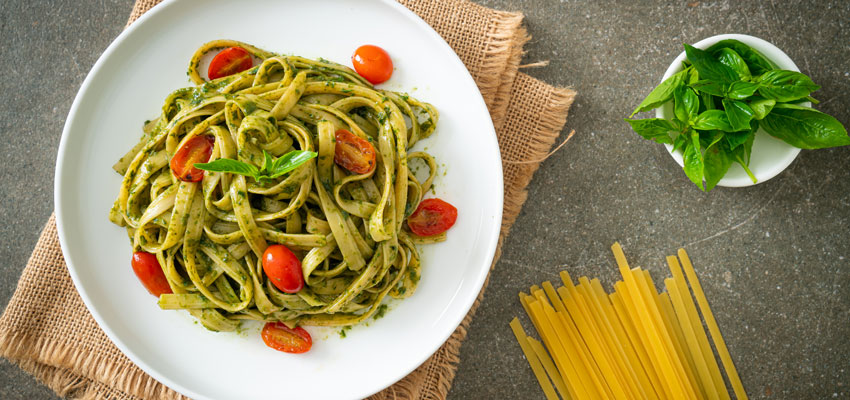The Austrian consumer magazine VKI had 13 different pesto preparations from the grocery stores tested. Only the five organic products were free of pesticide residues.
The report was published in the magazine "KONSUMENT" in September. As part of the residue tests, mineral oil components were also checked. The organic products were free of pesticide residues, but in others harmless traces of pesticides could be detected. The testers also took a closer look at the ingredient lists. The recipe of the classic "Pesto alla Genovese", which should consist of olive oil, fresh basil, roasted pine nuts, garlic, salt and Parmesan or Pecorino cheese, was sometimes substantially modified and the expensive original ingredients were replaced by cheaper ones. The proportion of basil varied between just under 13% to 58%. Pine nuts were replaced by cashews and instead of olive oil, inexpensive sunflower oil was used in the popular pasta sauce.
Citrus or bamboo fibres, potato flakes, rice and maize flour and numerous additives were even used to adjust the texture. It is therefore advisable to take a look at the ingredients list before buying if you are looking for authentic delights and do not want to make the pesto yourself from fresh ingredients. However, it is worth the effort because you can store it in the fridge for several weeks without any worries due to the high preserving oil content.
YOUR PLUS: AGROLAB advises you to have the ingredients tested for possible residues before processing. We test the commercial products for correct declaration, as well as extensively for undesirable contaminants, and for microbiological and sensory quality. In the case of the pesto test, we would also have advised testing for mycotoxins too, by the way.
Link:
Author: Dr. Frank Mörsberger

 Contact
Contact

 Contact
Contact Career
Career